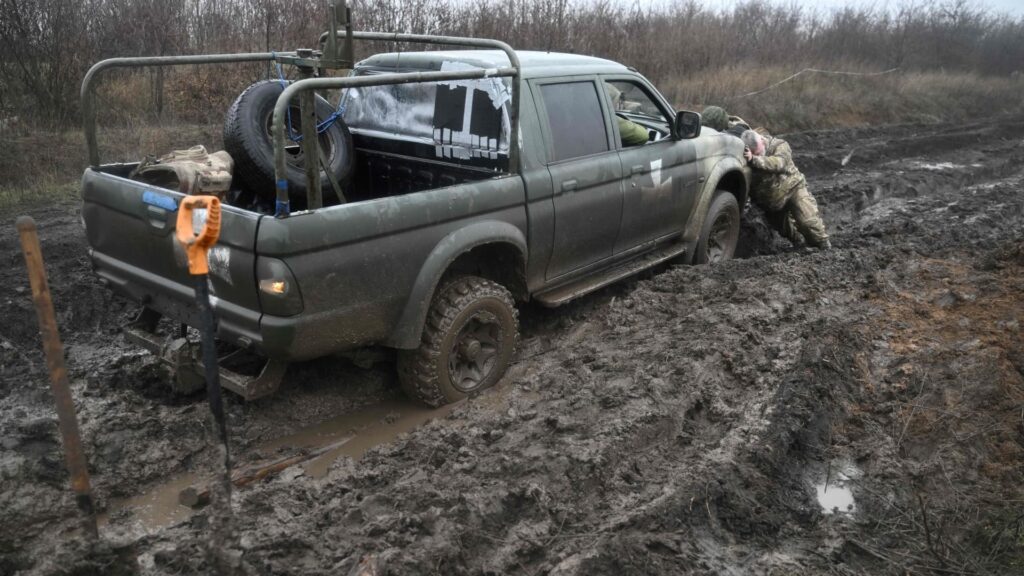Wreckage of Russian military vehicles, destroyed by Ukrainian Forces during a counteroffensive in the Kharkiv region, lie in a mud in a forest on September 22, 2022 in Izium, Ukraine.
Global Images Ukraine | Getty Images News | Getty Images
Ukraine and many Western analysts believe Russia is on the precipice of launching a new, large-scale offensive but it’s likely to encounter a familiar obstacle: mud.
Frozen ground conditions in Ukraine are expected to give way to a thaw in the coming weeks, turning the war-torn nation’s fields and rural roads into a quagmire for troops and tanks.
Ukraine’s muddy season is so infamous that it has a name, “Rasputitsa” — referring to the season that comes in late fall and early spring — and it has caught out various armies over the centuries, from Napoleon Bonaparte’s invasion of Russia in 1812, which was famously slowed by the mud in Ukraine, to Hitler’s Nazi forces floundering in muddy conditions as they invaded the then-Soviet Union in 1941.
Despite its infamy and annual occurrence, the mud still managed to catch Russian forces out after they invaded Ukraine last February with images and footage online showing Russian tanks and armored vehicles stuck and abandoned in the mud, much to Ukraine’s satisfaction. Needless to say, however, its own forces are not immune to the problem.
Ukrainian servicemen push a car stuck in mud on a field road on the frontline in Donetsk region, on December 17, 2022, amid the Russian invasion of Ukraine.
Genya Savilov | Afp | Getty Images
While the war has changed since the last muddy spring season — with Russia now concentrating its forces on an expected, large-scale offensive focused on fully occupying eastern Ukraine (and potentially including Zaporizhzhia in the south and the northeastern Kharkiv region) — the arrival of spring is expected to bring familiar challenges for both sides, as well as unknowns around the direction the conflict will take.
“The weather continues to play a significant…
Read the full article here





